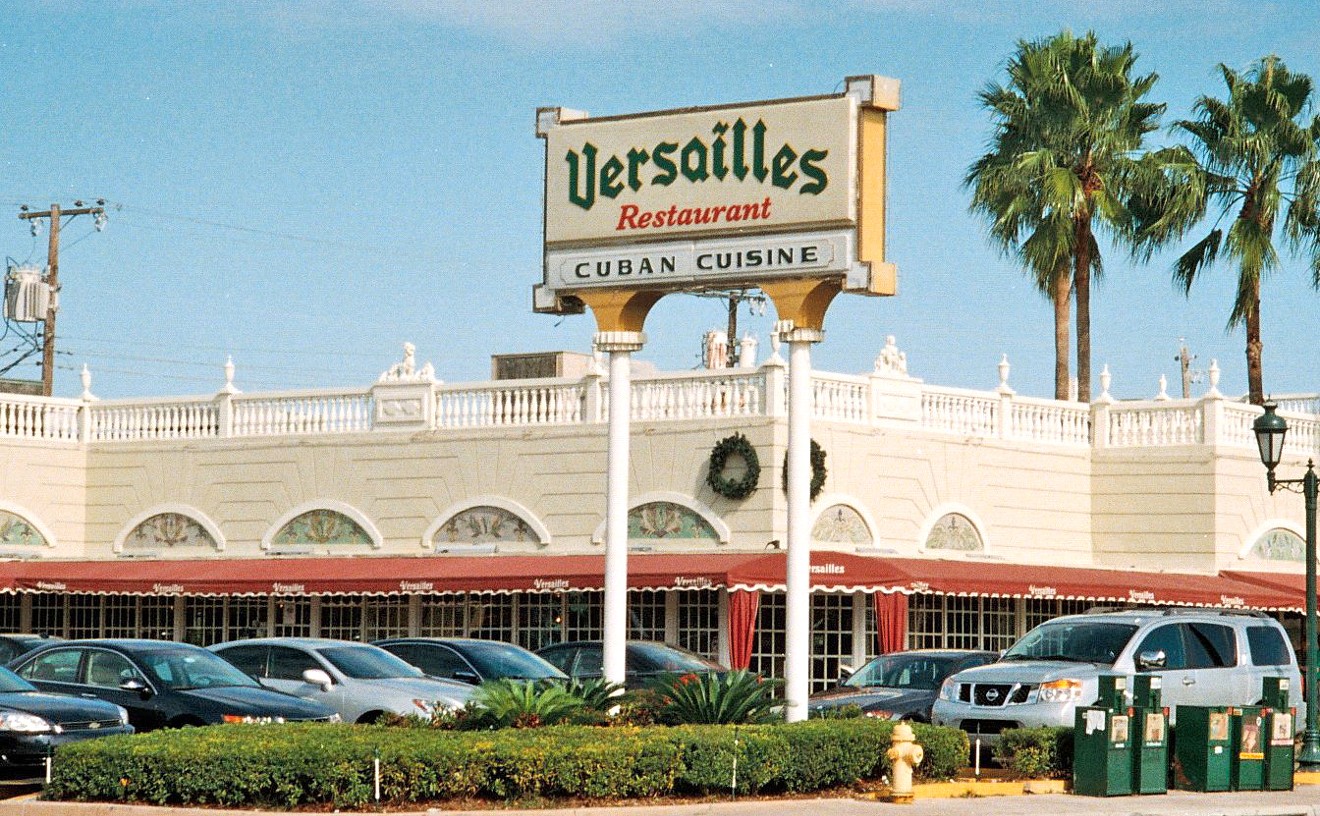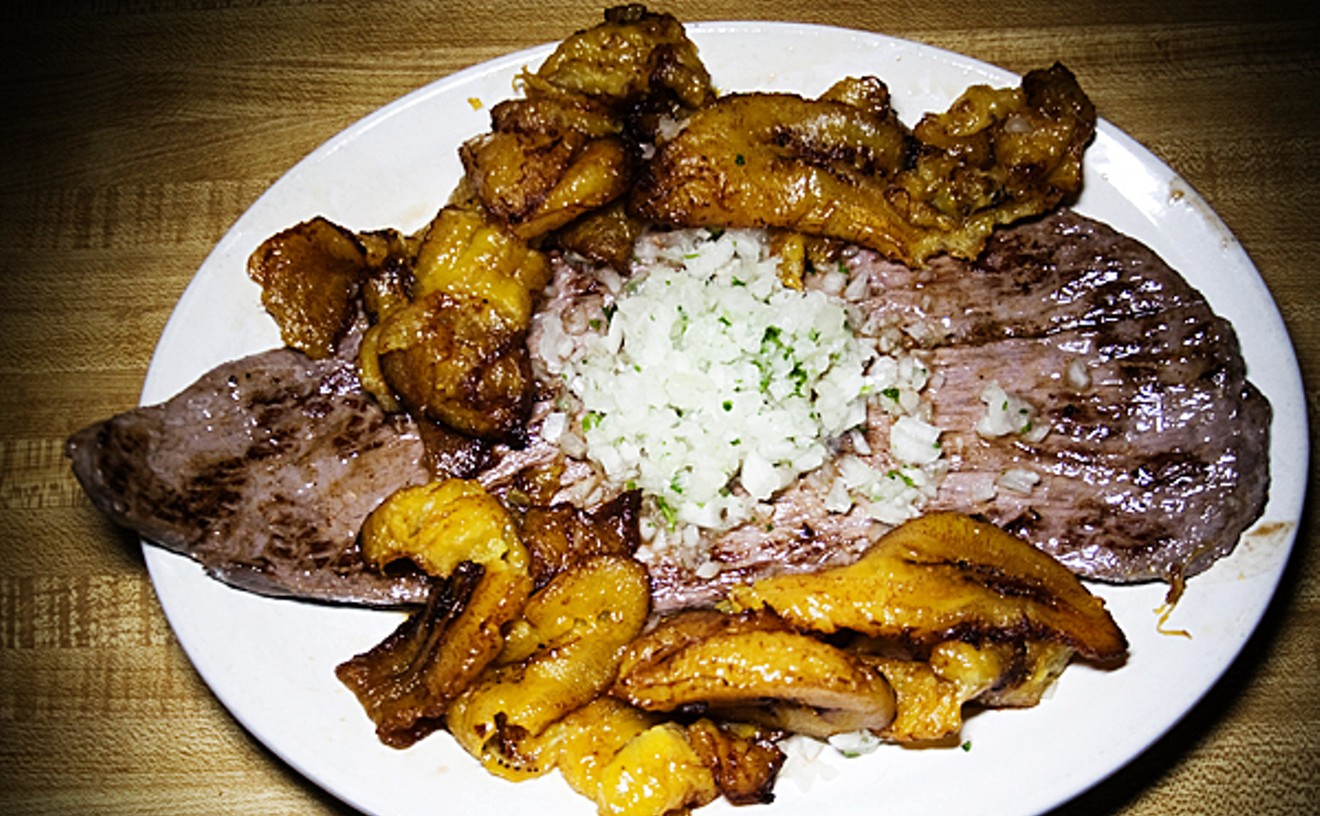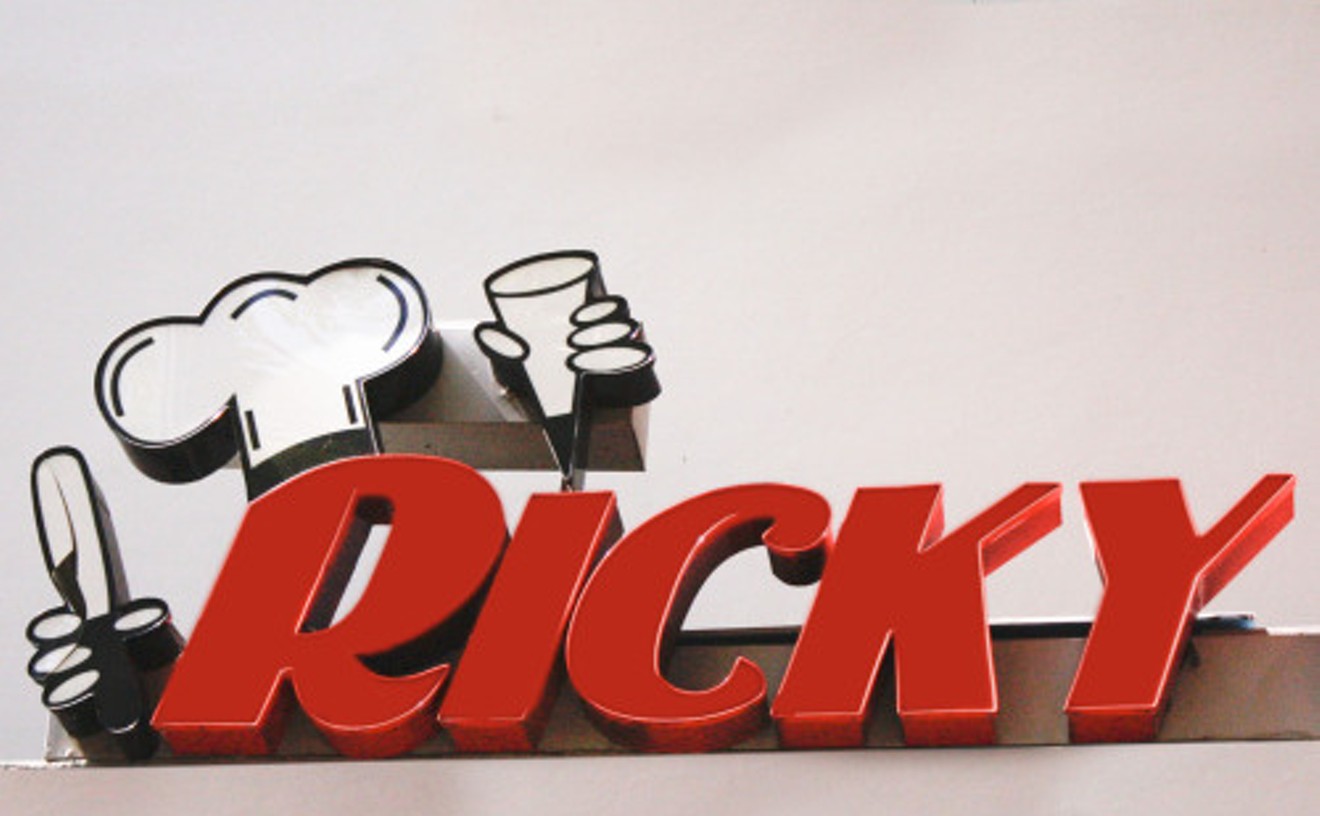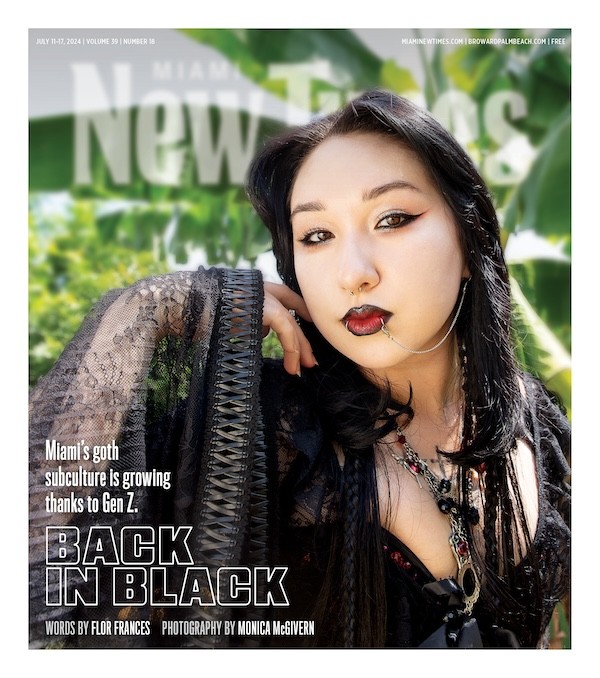Best Argentine Restaurant
Patagonia

Argentines are known for their arrogance and red meat. At Patagonia, you get plenty of the latter without much of the former. Miami has a glut of Argentine meat factories/steak houses, and most are pricey. But this place in Coral Gables seems to dispense with presentation in favor of substance. Sure, there's no waiter service — you order at the counter — and there's little similarity between this eatery and other Gables fine-dining restaurants, but we view that as a positive. Patagonia has street cred to go along with its sidewalk seating and an enviable mastery of the famous gaucho parrilla (Argentine barbecue). A wide variety of meat cuts are available for dine-in or take-home, including entraña (skirt), vacio (flank), and bife de chorizo (sirloin). And don't forget the chorizo (sausage). Additionally, the shop boasts an extensive wine selection and a long pastry counter featuring masas finas, facturas, and other baked goods. Looking for a quick bite before you take in a show at the nearby Actors' Playhouse? Then order an empanada and sandwich de miga.
- 244 Miracle Mile, Coral Gables, 33134 Map
- 305-640-8376
- www.patagoniausa.net/gables/index.html
Best Organic Latin American Cuisine
Bernie's L.A. Café
Benevolent dictator. Cheap Lamborghini. Hilarious Pauly Shore film. Some adjectives simply don't belong next to some nouns. The combination jars the eyes and sets the brain aflame: Something is wrong here! In Miami, the proximity of organic to Latin American cuisine has exactly that effect on far too many diners inured for years to greasy arepas and questionably sourced ropa vieja. Those diners have never been to Bernie's L.A. Café, a tiny, hiply appointed eatery with 30 seats and a countertop in an Alton Road storefront. Chef Bernie Matz — known for his stint at the Café at Books & Books — marries Miami's sultry mix of Latin American cuisines with the freshest organic ingredients. And guess what? It's delicious. From a traditional picadillo made with 100 percent hormone-free sirloin to similarly sourced fricase de pollo (half a tender chicken in spicy tomato-creole sauce) to a mouthwatering fish pan-fried in a simple coconut sauce, Bernie's never sacrifices taste for organic cachet. Say it with us: organic Latin American cuisine. At Bernie's, that's no oxymoron.
Best Cuban Restaurant
Islas Canarias

Photo by Phillip Pessar via Flickr Creative Commons
Sure, you can get a sandwich de medianoche and a giant plate of vaca frita anywhere in this town. But what if you're craving harder-to-find Cuban specialties such as tasajo con boniato, cured, salted beef boiled soft with vegetables and spices and served with sweet potato; or pechuga con quimbobo, chicken slowly stewed with potatoes and okra? At those times, you'll want to head to Islas Canarias, a spot curiously named for a region of Spain. It has been a Miami Cuban food institution for more than 30 years. The ambiance is Scarface-chintzy: neon lights, strip mall surroundings, and old-timers and huge familias packed into tight seating. But the locally famous croquetas ($1.15 each) — wrapped in a thin layer of batter, cleanly fried, and stuffed with creamy, cumin-seasoned pork — are alone worth the venture.
- 3555 SW Eighth St., Miami, 33135 Map
- 305-444-0240
- www.versaillesrestaurant.com
Best Batido
Los Pinareños Frutería

When the nostalgia thermometer of a Cuban exile registers a dangerously high level, it usually signifies the person is in a state of hallucinatory shock known as "acaba de llegar." Symptoms include calling all friends socios, having a packed bag that weighs exactly 44 pounds sitting next to the door, and frequently waving a ration book at the man behind the counter at Los Pinareños Frutería. This last behavior is understandable — after all, the open-air fruit stand housing mangos, mameys, guanabanas, nisperos, and coconuts neatly arranged in cardboard boxes held up by long sticks of sugarcane can be easily confused for any Pinar del Río timbiriche. The occasional wandering roosters also don't help. The smartest thing to do if you spot someone in this state of mind is let them be. Order a sapodilla shake, which you won't find anywhere else. Light up a self-rolled cigar. And watch the 90-mile divide wither away.
- 1334 SW 8th St., Miami, 33135 Map
- 305-285-1135
Best Flan
Rio Cristal

Natalia Molina
Like sugar melted into caramel, flan in Miami constantly burns a hole through our hearts. It's so easy to make: eggs, milk, and sugar — maybe a little vanilla or cinnamon — whisked into a custard. And every Latin American country has its own perfected rendition. So why are we constantly subjected to overly creamy masses of what basically amounts to pudding violently infused with corn syrup at even the fanciest restaurants? We expect our flan to jiggle, the loving result of a traditional bain-marie cooking method. And we want it imbued with real sugar, but not such massive amounts that we must schedule several root canals in anticipation. Enter Rio Cristal, an unfancy, greasy-plate Cuban joint whose flan ($3.90) wiggles like a stripper at a Lil Wayne party, sits in a pool of syrup so shimmery it blinds us, and melds into creamy goodness as it restores our faith in "Spanish cheesecake."
- 9872 Bird Rd., Miami, 33165 Map
- 305-223-2357
- www.riocristalrestaurant.com
Best Croissant
Le Royal French Bakery

When in search of French boulangeries where you can twirl your mustache, ponder life's intricacies over a cup of café au lait, and enjoy romantic accordion music in your head, you probably head for Miami Beach. But the French twins who own Le Royal, a tiny café tucked into a strip mall, know better. They had the foresight to predict hungry University of Miami scholars would need butter to function; antsy Sunset Place shoppers would delight in more than six types of croissants; and stressed-out commuters stuck in traffic on South Dixie Highway would require pit stops to refuel on flaky carbs. So the brothers rolled out the pastry dough, kneaded in copious amounts of beurre, and delicately folded glorious petite crescents to create the only pastries in South Miami that sell out by midafternoon. Choose from plain, apple, or almond. Stuff with ham and cheese, guava and cheese, or simply enjoy as light-as-a-feather, billowy bread without garnish. Either way, you'll merci beaucoup us during your next trip to mall hell.
- 7370 Red Rd., South Miami, 33143 Map
- 305-665-6631
Best Empanadas
Che Tano

Argentines are recognized for their meat. In fact, you can find a parrillada serving loads of churrasco, sausage, and ribs in almost any Miami neighborhood. Argentine bakeries are not as ubiquitous, although they should be. Somehow, while the rest of the Hispanic world never thought to venture past chicken and beef empanada fillings, Argentines boldly went where no Latino had gone before. Che Tano celebrates this diversity by offering about 18 kinds of empanadas — double that if you count the fact that you can choose either baked or fried. Think of all the wonderful options: corn, cheese and onions, tuna, and ham, cheese, and hardboiled egg — the list seems endless. While variety might be the spice of life, let's not forget there is still value in tradition. After all is said and done, the beef empanadas (baked and fried) at Che Tano are the stuff that dreams are made of.
- 9564 SW 137th Ave., Miami, 33186 Map
- 305-395-7436
Best Mofongo
Old San Juan Restaurant
In the mainland United States, we have baseball, apple pie, and mom. Substitute mofongo for apple pie and you have a fairly good working list of priorities in Puerto Rico. The Boricua specialty — a heaping mound of mashed fried green plantains studded with crisp pork cracklings — has many incarnations across the island: drenched in tomato sauce, loaded with garlic and onions, or topped with chicken or beef, lobster, or shrimp. Luckily for Miami, mainstay Puerto Rican eatery Old San Juan has just about every variation on the menu. The mofongo con pollo brings a garlicky grilled strip of chicken topped with caramelized onions next to the soft mound of mofongo; order the pulpo and you'll get tender tendrils of octopus with your fried plantains, or the shrimp for a pile of buttery crustaceans on the side. Old San Juan serves its mofongo with a traditional cup of chicken broth for sipping and dipping. Bring a friend — the portions are huge, so even though you're sampling mofongo in the States, there's no way you'll have room for apple pie afterward.
- 1200 SW 57th Ave., Miami, 33144 Map
- 305-263-9911
- www.oldsanjuanmiami.com
Best Cuban Sandwich
Mario's Latin Café

A Cuban sandwich — that majestic combination of ham, roast pork, Swiss cheese, yellow mustard, and pickles — is supposed to be so massive that you can't finish the whole thing. Most restaurants today offer a smaller, contemporary version, but for those of you with a hankering for an old-school sandwich, fear not. Mario's Latin Café on South Dixie Highway in Homestead still serves a heart-attack stack of deli meats and cheese on some of the freshest, softest Cuban bread in town, all for less than $6, 24 hours a day (closed Sunday). Go on — feast like a beast. Your ancestors will be proud.
- 1090 N. Homestead Blvd., Homestead, 33030 Map
- 305-247-2470
- www.marioslatincafe.com
Best Croquetas
Ricky Bakery II

Do not confuse croqueta with croque monsieur — the French grilled ham-and-cheese sandwich — although two traditional fillings of croquetas are indeed ham and cheese. A croqueta likewise has little to do with croquant, which is French for "crunchy," or with croquembouche, a dessert named for the translation "crisp in mouth." Yet the croquetas at Ricky Bakery are very much crisp in the mouth, owing to the breaded, cleanly fried cylindrical casings. Or maybe it is more accurate to say they have some crunch upon first bite, but then the creaminess of the filling takes over. This is true of whatever flavor you choose, be it bacalao (not too fishy), spinach (a unique croqueta filling, and one you shouldn't miss), chicken, cheese, or ham. You can grab them hot from the fryer at opening time (6 in the morning) or at various hours during the day; the cook will also fry 'em to order if you ask. Do not confuse Ricky's croquetas with any others around town. These are better.
- 3115 Coral Way, Coral Gables, 33145 Map
- 786-552-9494
- www.fl-mall.com/ricky/





